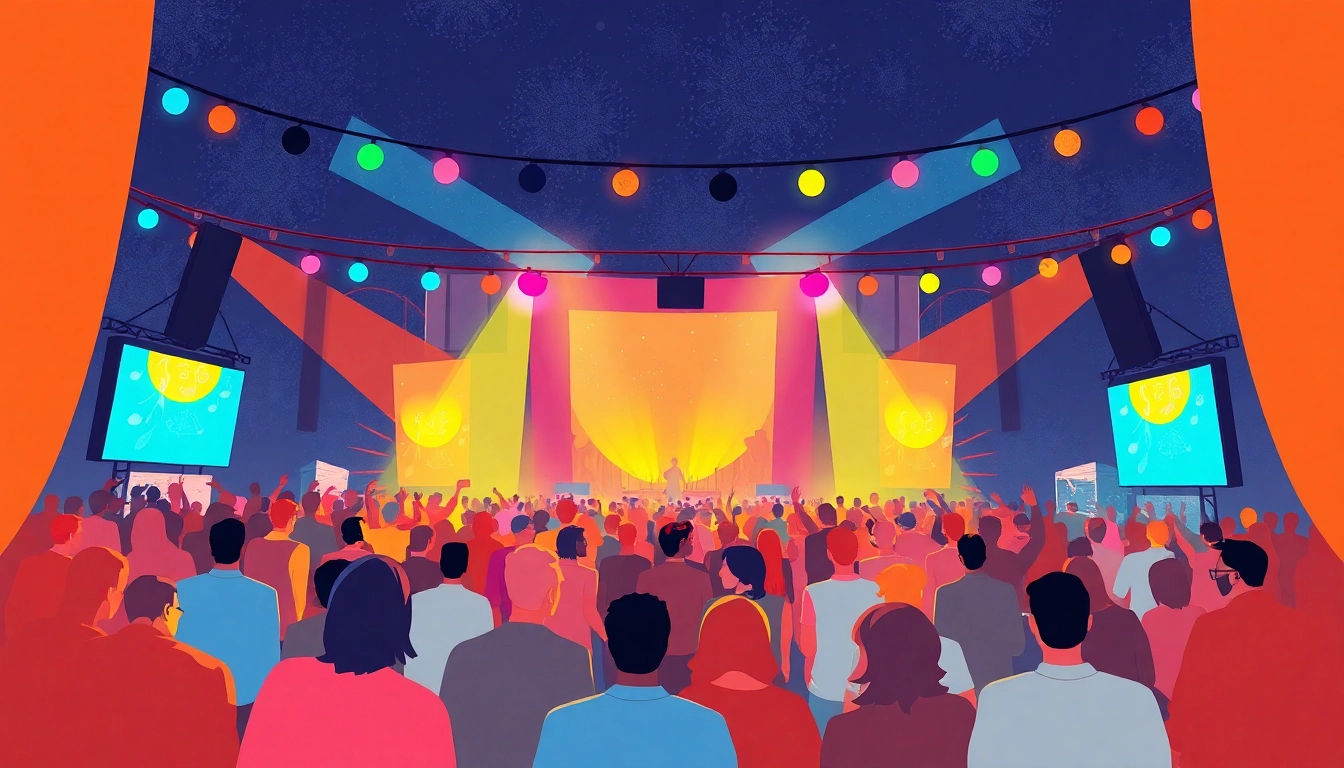Understanding Icons: Definition and Importance
Icons serve as vital visual elements in modern communication and design. They are more than just simple images; they encapsulate complex ideas, emotions, or functions in a concise manner. As digital spaces become increasingly cluttered, the role of Icons becomes ever more significant. Through effective iconography, designers can enhance user experiences, aid navigation, and convey information quickly and efficiently.
What Are Icons?
Icons are graphical representations designed to symbolize an object, action, or concept. Primarily used in digital interfaces, they act as visual shorthand, allowing users to recognize functions at a glance. Icons can vary widely, from simple designs like the trash bin, which indicates deletion, to more complex graphics representing multi-faceted applications or platforms.
Their simplicity and universality make them extremely effective in transcending language barriers. Icons can be universally understood, making them essential tools in international applications where textual language might create confusion.
The Role of Icons in Daily Communication
Icons permeate our daily lives. From the heart symbol indicating love in text messaging to the various icons on our smartphones indicating different applications, these visual cues streamline communication. They provide instant recognition and understanding, enhancing both individual and collective engagement.
In professional settings, icons facilitate quicker information processing. When incorporated into presentations or reports, they capture attention, encourage interactions, and make complex data more digestible. Consequently, the precise use of icons can drive effective communication and elevate the overall message of the content.
Designing with Purpose: Icon Objectives
Designing icons is not merely an aesthetic exercise; it is imperative that each icon serves a specific purpose. The objectives of icon design can include:
- Functionality: Facilitating user tasks and improving usability.
- Recognition: Ensuring immediate understanding and recall.
- Aesthetics: Enhancing visual appeal to attract users.
- Brand Alignment: Reflecting a company’s identity and values.
Each icon must be thoughtfully crafted to fulfill these objectives while maintaining a consistent visual identity throughout an application or website.
Types of Icons and Their Applications
Common Categories of Icons
Icons can be classified into several categories based on their functions and applications:
- User Interface Icons: These are commonly found within web and application interfaces, including buttons, navigation arrows, and toggles.
- Brand Icons: Logos and emblems represent companies and products, serving as brand identifiers.
- Social Media Icons: These icons link users to various social media platforms and are increasingly recognizably branded.
- Action Icons: Used to convey specific actions, like download or upload, these icons guide users on interactions.
Understanding the diverse categories helps designers select the most appropriate style and function based on the icon’s intended role.
Using Icons in User Interfaces
In user interface (UI) design, icons are pivotal in guiding user interactions. Effective use of icons can make navigation intuitive, reduce cognitive load, and foster a more engaging user experience. UI icons should:
- Be consistent in style and size for familiarity.
- Complement user actions by providing visual prompts.
- Be placed strategically to enhance functionality and flow.
For instance, a uniformly styled icon set can provide a cohesive look, which reduces distraction and aids user comprehension. Additionally, icons should be responsive and scale appropriately on different devices to maintain usability across platforms.
Icons in Print and Digital Media
Beyond digital interfaces, icons find applications in print or mixed media projects. They are used in advertising, presentations, infographics, and more. With print media, icons can serve similar purposes as in digital forms, offering immediate visual cues that make text-heavy content more accessible.
In educational materials, icons can help highlight key information or facilitate navigation between sections. In branding and marketing, icons can encapsulate messages in advertisements. Thus, understanding the flexibility of icons in various media can empower designers to create more versatile projects.
Best Practices for Icon Design
Considerations for Icon Clarity and Recognition
Clarity is paramount in icon design. Users should be able to interpret icons without confusion or doubt. To achieve this, designers should:
- Utilize familiar shapes and symbols to enhance understanding.
- Ensure that icons remain recognizable at various sizes.
- Avoid overly complex designs that can dilute clarity.
Prototyping and user testing are essential to verify the effectiveness of icons. Gathering feedback helps identify ambiguities and reinforces the clarity of the designs.
Color Theory and Icons: Enhancing Engagement
Icon color choices significantly impact user perception and engagement. Each color can evoke different emotions and associations. For example:
- Blue: Often associated with trust and reliability.
- Red: Signifies urgency or important calls to action.
- Green: Represents growth, safety, and nature.
Integrating color theory into icon design can enhance not only aesthetics but also invoke desired user responses. However, it’s crucial to maintain a balanced color palette that aligns with the overall design theme and brand identity.
Accessibility and Icon Design
Inclusive design practices should consider the varying levels of visual ability among users. Icons should not rely solely on visual elements but also include accessible attributes. To cater to all users:
- Accompany icons with descriptive text labels.
- Choose high-contrast colors to ensure visibility for users with low vision.
- Design shapes that are easily distinguishable for colorblind users.
Ensuring accessibility in icon design enhances usability and broadens the audience reach, proving beneficial in both digital and print environments.
Innovative Trends in Iconography
Flat Design vs. Three-Dimensional Icons
The evolution of design trends significantly impacts iconography. Flat design has emerged as a dominant trend characterized by minimalism and a two-dimensional aesthetic. This approach simplifies visuals, focusing attention on content rather than overly complex graphics. Conversely, three-dimensional icons incorporate depth, shadows, and gradients, offering a more tactile and lifelike appearance.
Both styles have their merit depending on the context and audience. Flat designs may encourage swift loading speeds and clarity in digital spaces, while three-dimensional icons can evoke a sense of modernity and engagement in interactive environments.
Responsive Icons: Adapting Across Devices
As users interact with an increasing array of devices, responsive icon design becomes crucial. Icons must adapt gracefully to various screen sizes and resolutions, ensuring consistency and usability across different platforms. Designers should consider employing scalable vector graphics (SVG) to maintain quality when scaling icons.
Additionally, responsive design allows for the adjustment of icon positions and sizes on smaller screens, enhancing mobile usability, and creating a streamlined user experience.
The Rise of Animated Icons
Animation has begun to play an increasingly important role in iconography. Animated icons can create visually engaging experiences by providing users with feedback and drawing their attention to specific functions or notifications.
For example, loading indicators or hover effects can guide users without detracting from the overall clarity of the interface. However, designers should use animation judiciously: excessive movement can overwhelm the user and negate the icons’ functionality.
Implementing Icons: From Concept to Execution
Tools for Creating Custom Icons
Numerous tools and software are available for designing custom icons, catering to different levels of expertise. Options range from professional design software like Adobe Illustrator to user-friendly online platforms that offer templates and customization options.
The choice of tool largely depends on the designer’s skill level and the specific needs of the project. Inviting collaboration among teams can also harness diverse perspectives, leading to more innovative icon designs.
Testing Icons in Real-World Scenarios
Testing icons in real-world scenarios is essential for validating their effectiveness and usability. User testing sessions can reveal insights into how users interact with icons and the meanings they assign to various designs. This feedback loop can directly influence adjustments needed in icon clarity, function, or aesthetics.
Conducting A/B tests can pinpoint what designs perform better, leading to more informed design decisions that meet user expectations.
Metrics for Evaluating Icon Effectiveness
Measuring the effectiveness of icons requires leveraging various metrics related to user engagement and experience. Key performance indicators could include click-through rates, time spent interacting with icons, or user feedback and satisfaction ratings.
Evaluating these metrics assists design teams in making necessary adjustments and enhancements over time, ensuring that icons not only look great but also achieve their intended user objectives.



